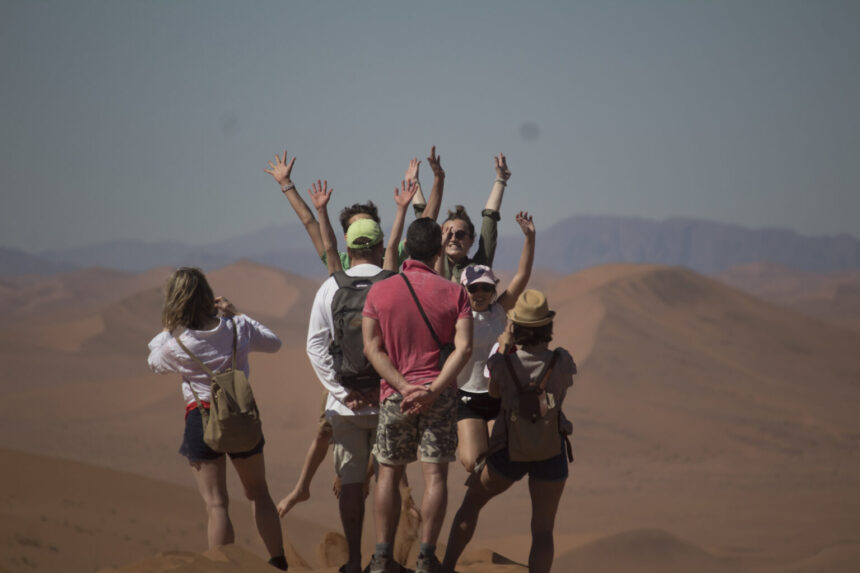Namibia’s accommodation establishments reported a 65% occupancy rate for the third quarter of the year. This is slightly higher than during the same time last year, even if it is just by a quarter of a percent. This figure was provided by the Hospitality Association of Namibia (HAN), which stated that with a month-to-month comparison, September 2023 was just over 2% down on 2019 levels.
HAN CEO Gitta Paetzold noted that these latest figures, released last week, halt the growth trend on recovery levels set during both July and August this year.
“Comparative figures indicate that the growth is mainly thanks to the increase in arrivals from Central Europe, with the German-speaking countries as well as France and Italy all ending more than 3% higher than the levels of 2019”, she said.
Leisure travel still dominates occupancy numbers at Namibian accommodation establishments, although some hotels are reporting a gradual increase in demand for business and conference packages.
“In discussions with the wider travel industry, it was emphasised that the accommodation performance indicators do exceed the level of recovery of the larger tour operation sector, which reveals that the online reservations and self-drive component of the Namibian tourism market was the first to fully recover and grow. An early prognosis for 2024 would indicate further recovery of the group-travel market, with forward-bookings for that segment of the industry looking promising,” Paetzold stated.
As Namibia now gradually moves into the tourism shoulder season, it is hoped preparations both in terms of strong marketing efforts within the international and regional markets are being prepared, while service providers and property and infrastructure owners use the time for maintenance, skills development and product optimisation to ensure Namibia is able to keep the momentum of a growing and vibrant tourism industry.
Meanwhile, the environment, forestry and tourism ministry has observed that all overall indications point to a significant increase in tourist arrivals this year, which has seen the revival of this crucial economic sector.
“The ministry is happy to observe that the sector is regaining momentum after the devastating impact of Covid-19. We continue to observe a massive influx of tourists to the country, to the point that most accommodation establishments are full,” said the tourism ministry’s spokesperson, Romeo Muyunda.
The ministry’s statistical report for 2022 indicated a 98.1% increase in tourist arrivals from around 232 700 in 2021 to over 461 000 in 2022.
Responding to recent queries from New Era on the revival of the sector, Muyunda stated: “This creates opportunities for those aspiring to get into the hospitality industry to do so. The increase in tourism arrivals is welcome to assist the sector in recovering the losses incurred during the pandemic. This also presents a positive outlook for employment-creation in the sector, and significantly contributes to the GDP of the country. Tourism has always contributed to poverty reduction in the country through its multiplier effect”.
Meanwhile, a domestic hospitality report by local stock brokerage Simonis Storm (SS) noted that “given that September typically represents the peak month of the year, we anticipate that this September will surpass pre-pandemic levels”.
Moreover, their outlook and recovering trajectory for the local tourism sector remain optimistic. In its report, SS noted that according to the European Travel Commission (ETC), Europeans’ intent to travel has decreased by 4% in comparison to previous years. This is as Austrians, Swiss and Germans exhibit increased hesitancy as holidaymakers, while the French, Belgians and British display greater enthusiasm for travel in the upcoming months of October and November. The decline in travel intent is ascribed to mounting financial pressures experienced by Europeans, coupled with concerns regarding elevated travel expenditures.
SS cautioned that this reluctance to travel might make a small dent in Namibian tourism figures, given that Austrians, Swiss and Germans account for 34% of the country’s tourists for the year-to-date.
“Namibia sustains its attractiveness as a destination, owing to the depreciation of the Rand, which has depreciated by 14.2% year-on-year against the Euro at the time of this analysis. In parallel, while the tourism industry remains actively engaged in diverse promotional campaigns spanning Europe, the USA and the regional arena, it is proactively shaping strategic collaborations with stakeholders and law-enforcement authorities” the report reads.
SS emphasised that this approach aims to address a recent surge in criminal incidents targeting tourists, necessitating a unified and concerted endeavour encompassing all facets of Namibian society. – ebrandt@nepc.com.na


